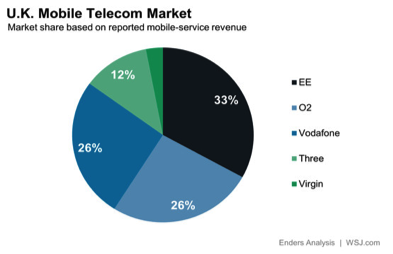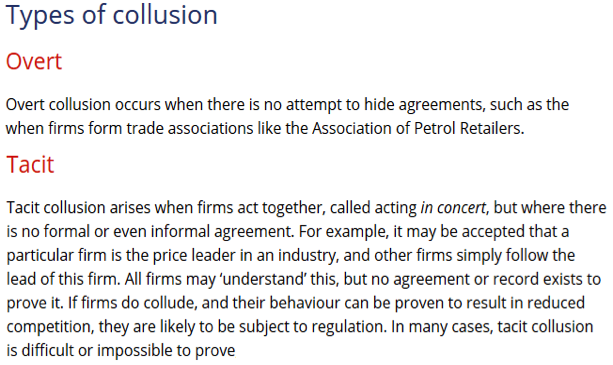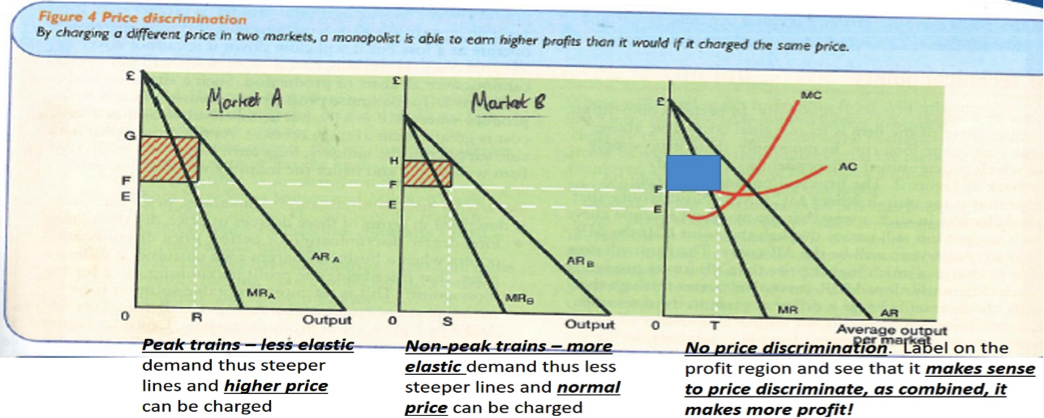Oligopoly
Concentration ratios
The concentration ratio measures the combined market share of the top ‘X’ firms in the industry. They can be measured by sales, employment or any other relevant indicator.
Non-price competition, Interdependence, Price stability and Tacit agreement
Recap: Oligopoly importance: __Most markets are said to be imperfectly competitive. A few are monopolistically competitive (e.g. hairdressers, plumbers etc) but the majority are __concentrated markets, dominated by a few suppliers – i.e. an oligopoly. Therefore the theory on the market structure of an oligopoly is arguably the most important of the theories of the firm.
__Market structure: __For an industry to be classified as an oligopoly there must be three key aspects of its market structure:
- Supply in the industry must be concentrated in the hands of a relatively few number of firms. Generally speaking we draw the combined concentration ratio of the 3/4/5/6/7 firms dominating the market at more than 60% market share in order to be classified as an oligoploly.
-_ Firms must be interdependent._ The actions of one firm will directly affect another. In perfect competition firms are independent – if one farmer decides to grow more wheat this does not affect his nearest competitor nor market prices. In an interdependent oligopoly however, if one large firm decides to pursue policies to increase sales, this is likely to be at the expense of other firms in the industry.
- _There are barriers to entry to the industry. _If there weren’t, firms would enter the industry to take advantage of the abnormal profits and would reduce the market share of the dominators.
Market Conduct - Oligopolistic market conduct has a number of features:
Interdependence
-
Oligopolists are interdependent
-
Their market shares and profits will be influenced by what their rivals do
-
Think of a oligopoly as a ‘club/society’ which is hard to get into…
-
What fellow members of the club/society do will affect you!
-
Eg., the emergence of EE and the 4G network
Price stability
-
Competition in an oligopoly may range from quite muted to very fierce.
-
There is almost always strong non-price competition, using product differentiation and extensive advertising.
-
Always, businesses within an oligopoly will watch each other closely: they are said to be interdependent.
-
Any action by one is likely to produce a market response in others. Samsung sought to produce an equally attractive phone. Sony etc quickly followed!
-
Markets with less technological change may keep prices stable in order to avoid the losses that may be associated with a price war.
-
One business may feel very confident and reduce prices in order to increase market share – supermarkets do this.
-
This may spark a price war (rare in oligopolies to deploy predatory pricing!) which is often regretted.
Therefore non-price competition is prevalent
-
Think back to 4.1.1 – what is non-price competition?
-
As it is in mutual interest in an oligopoly to keep price stability (to avoid sparking a price war – remember its an interdependent club/society!), firms will often compete on the other 3Ps.
-
Product differentiation and extensive advertising are the most popular choices! E.g. Apple vs Samsung is generally engaged in these areas.
As is tacit collusion
This can occur as price leadership
-
One firm, not necessarily the big fish, makes a decision on price changes.
-
Due to the interdependent nature of oligopolies, others follow to the same level – thus the term price leadership.
-
Eg. Petrol stations are often copycats if a nearby competitor cuts their price per litre… same goes if they increase.
Monopolies/uncompetitive oligopolies and price discrimination
-
Price discrimination means charging different prices for the same product in different markets.
-
Rail operators are most likely to do this, charging commuters more than they charge off-peak travellers.
-
It is easy to keep the markets separate because commuters all travel at the same time of day.
-
Price discrimination works by exploiting variations in price elasticity of demand in different market segments.
Business which have the right conditions can use price discrimination to increase their revenue. They are using price discrimination to capture some consumer surplus and take advantage that for some market segments (e.g. peak train users), PED is inelastic and they are willing to pay more for the same service!





